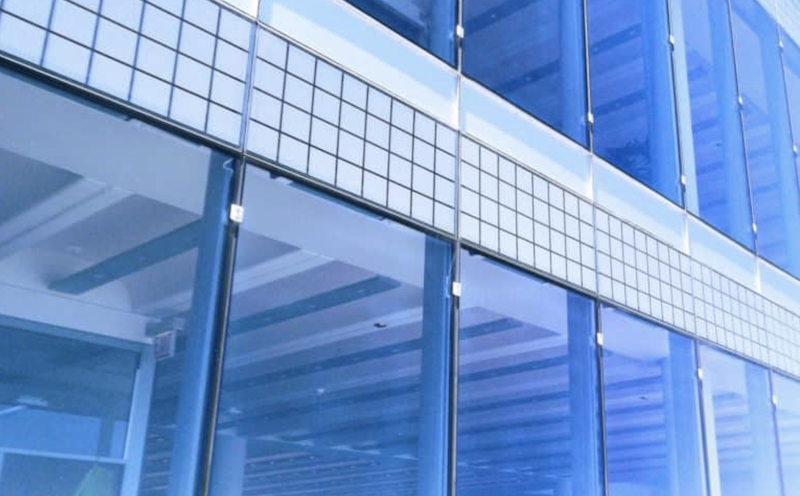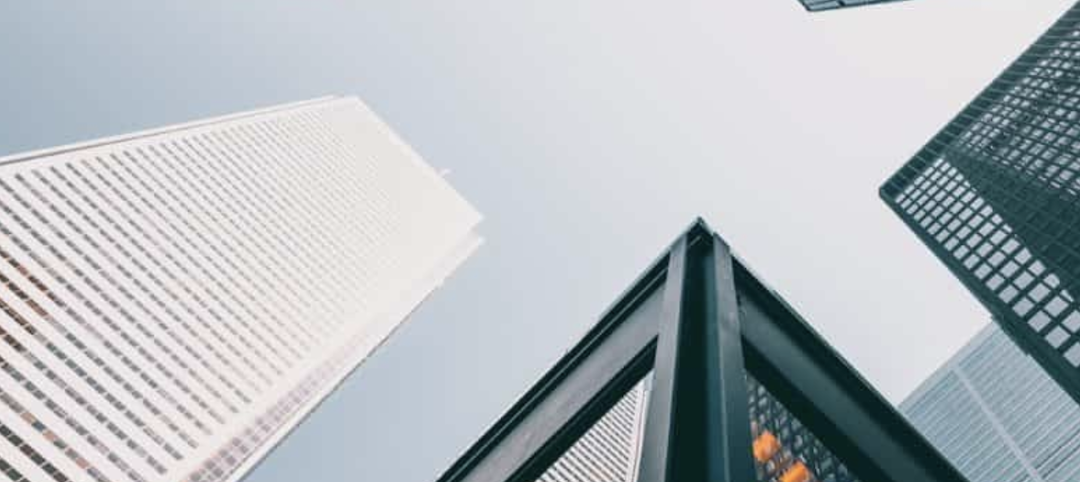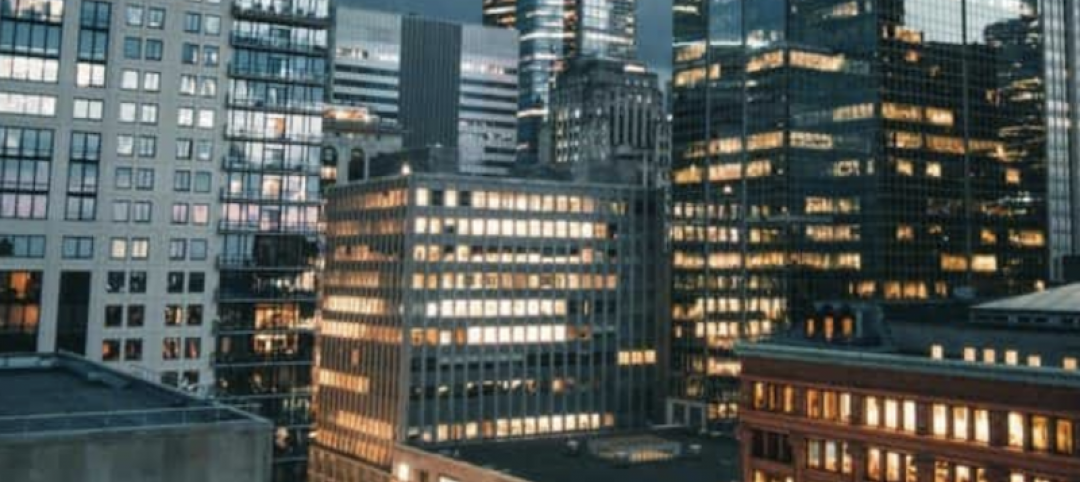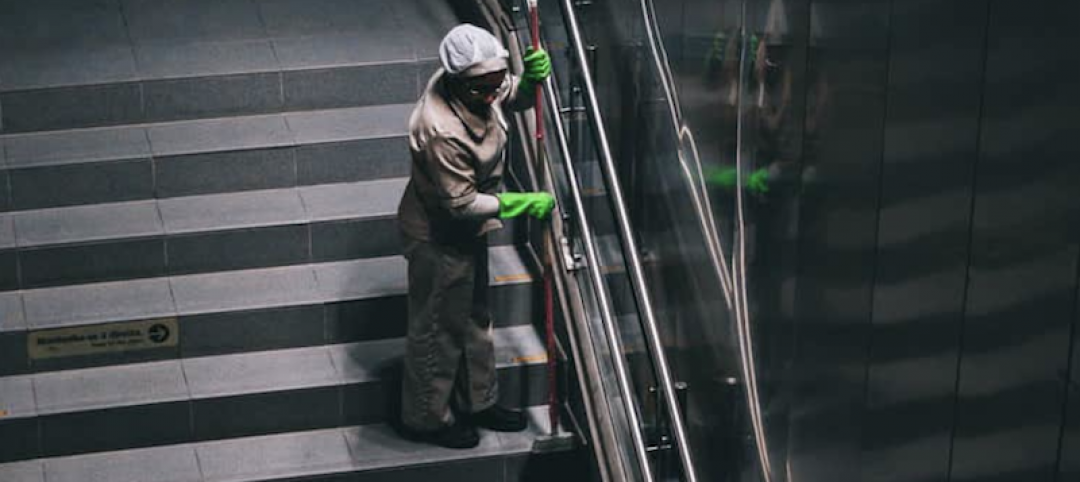Owners, architects, and inhabitants alike love glass box design for its reflective, shimmering, and transparent qualities. The connection between the inside and outside worlds is part of the allure of glass buildings, and glass box designs can seem to be one with the environment as they reflect the sky, trees, and nature around them. Architects and building occupants love the sleek appearance of glass buildings, plus the benefits of daylight and window views. Architects particularly enjoy designing glass boxes because the increased fenestration area can offset the need for additional lighting and provide a psychologically healthy connection to the outdoors (the biophilic effect).
While these motivations are often driven with sustainability – or at least healthy indoor environments – in mind, they are not entirely without their flaws. While the demand for glass box design comes from many directions, we have to wonder if the demand would be so high if the energy performance implications were better understood.
Even the best windows have an R-value of 3 at most, not to mention that windows are responsible for roughly one-third of the sun’s heat permeating through the building envelope. As a result, the solar heat gains increase the burden on space-conditioning systems, leading to over-exerted mechanical systems and wasted energy. And let’s not forget, glass’s poor insulative properties mean that glass buildings must have large-scale emergency generators in the event of a power failure.
Simply put, this is waste creating waste.
The way we measure sustainability is changing for the better. Historically, sustainability performance has been back-checked by rating systems like LEED, which used predicted performance as the primary metric of success. Now with increased transparency in building performance reporting, and as cities get smarter about setting requirements for code compliance, we are getting more information about actual energy performance for glass box designs, and the news isn’t great.
This is what led the owners of a LEED Platinum building in New York to come to terms with the reality of their modern all-glass, and ultimately under-performing, new construction building.
HOW A PLATINUM-CERTIFIED BUILDING FAILS FOR PERFORMANCE
The Bank of America Tower in Manhattan is 1,200 ft skyscraper in Midtown Manhattan that was designed with environmental performance in mind. The glass box design of The Tower emphasizes daylight and a connection to the outdoors, intending for this all-glass building to be “more than a glass box”. The Bank of America Tower is also built near public transportation, and protected or restored habitat in Bryant Park.
The Tower achieved LEED Platinum Core and Shell. However, in contrast to the LEED Platinum Core and Shell certification, the project received a D grade on an A-F scale from the city of New York for its energy performance.
New York City’s Local Law 84 requires certain properties to submit annual energy and water consumption data, making building energy use data publicly available. According to this data, the Bank of America Tower has the highest site energy use intensity (211 kBtu/ft2) of all buildings more than 1.5 million gross ft2 categorized as offices or financial institutions.
The Bank of America Tower does not stand alone – it is one of many glass box designs that are intended to support environmental aspirations and achieve efficiency, but fall short on energy performance once they are operating.
PLANNING FOR PERFORMANCE
The argument isn’t that teams should choose between prescriptive and performance-based targets. Prescriptive performance objectives are key to the process because they establish expectations for the design. Performance-based measurement is equally critical – until we understand how buildings operate compared to their designs, we can’t improve those designs. Performance verification MUST be part of the plan.
Where once the energy performance savings from HVAC and lighting systems could be counted upon to make up for the shortfalls in the performance of glazing systems, now the new baseline has started to close the gap on the performance expectation of the systems.
Just as commissioning a new building is essential, so is continuous commissioning of an existing building. New building commissioning only ensures that the building systems operate as specified. Continuous monitoring of the system’s performance helps to ensure that the goals of the design are met under normal operating conditions.
If a building is truly sustainable, designers should be able to show that the embedded energy of a double or triple glass cladding with aluminum frames is lower than that of alternative envelope solutions, or that the energy saved in running the building is so large that the energy payback time of the envelope is at least equal to the life of the building.
YOU DON’T HAVE TO GIVE UP WHAT YOU WANT
Architects, tenants, owners, and developers can have everything they love about glass box design without relying on glass boxes to get it. There are ways to achieve the design that teams want while delivering the performance that code, performance-based outcomes and certifications, and end-users expect.
The right approach will bring together several strategies. The case study for the world’s tallest passive house demonstrates a combination of correct orientation, no window walls, a proper thermal break, the right frames, a deep overhang, adjustable blinds, and shaded walls, came together to achieve the energy performance result. (source)
RETHINK THE PROBLEM TO COME UP WITH A BETTER SOLUTION
An all-glass façade does not necessarily provide good light. The key is to harness the daylight to your advantage, demanding a façade that provides good light – not too bright, and not too dark. The wrong kind of glass box could mean that inhabitants must pull down the shades to avoid glare or increase privacy. Does your design consider strategies such as:
- Louvres & Shading operated by automatic controls
- Double/triple glazing
- Ultra high-efficiency windows
- Low iron glass
- Building-integrated photovoltaics
- Metal scrims
- Fritted glass
- Filtered light
- Light pools
- Light shelves
- Windows and walls instead of glass walls
- The envelope: A tight envelope is key to energy efficiency.
- Insulation and air sealing: Set energy efficiency and IAQ targets independent of the third-party rating system (such as LEED).
- Energy cogeneration:
- Double skin facades
- Alternative assemblies
- Glazing
CONCLUSION
Glass buildings can be beautiful manifestations of our desire to look towards a sustainable future. We must remember, however, that to be truly sustainable, a building must be designed and constructed to stand the test of time. If a building’s performance suffers as a consequence of it’s aesthetic, how can we say that building is truly sustainable?
Through case studies and simple building science, it’s understood that there must be a give and take if we want a truly green glass building. As with nature, there must be a balance. Reducing glazing areas, optimizing building orientation, and using effective shading strategies can achieve impactful results. Mindful designs could instead harness heat gains from the sun to ease the burden on mechanical systems, instead of needing to offset those loads through additional cooling capacity.
Designers and Owners must also look beyond LEED certification and focus on building operations – where sustainable intentions are put to the test. Transitioning to performance-based specifications will require a fundamental paradigm shift among the design and construction community, which is only achievable through collaboration among all stakeholders.
More from Author
Paladino | Jan 10, 2022
The future of regenerative building is performance-based
Why measuring performance results is so critical, but also easier said than done.
Paladino | May 26, 2021
Injecting embodied carbon capability into the integrated design and construction process
Embodied carbon is defined as the carbon footprint of a material, and is expressed in metric tons of CO2e.
Paladino | May 12, 2021
Climate modeling for a resilient business and future
This post explores changes that developers and their teams need to make to their risk and resilience strategies by climate modeling for climate change.
Paladino | Apr 26, 2021
Building performance requirements are coming: Are you ready?
Building Performance Requirements are trending nationwide and are likely coming to a county near you.
Paladino | Feb 8, 2021
Six lessons learned from our first Fitwel Viral Response Module certification
The Fitwel Viral Response Module is one of several frameworks that real estate owners and operators can use to obtain third-party certification for their efforts ensuring their properties are ready for a safer and healthier return to work.
Paladino | Jan 14, 2021
Shift your energy to carbon
Now is the right and necessary time for the commercial real estate industry to shift its environmental strategy from just energy, a carbon contributor, to carbon itself.
Paladino | Nov 13, 2020
5 tips when designing for daylight
Daylight modeling is a tool to examine how daylight interacts with a building, and how that natural light behaves within interior spaces.
Paladino | Jul 16, 2020
COVID readiness: IWBI and USGBC seek to help businesses quantify risk
In an effort to address the risks of COVID-19 at the building scale, USGBC and IWBI have analyzed existing certification guidelines and drafted new, relevant content.
Paladino | Jun 5, 2020
3 strategies to improve the wellness of building systems and gain tenant trust
Three operational issues that must be prioritized for every building in order to achieve tenant trust are air quality/ventilation, relative humidity, and building commissioning.
Paladino | Apr 1, 2020
Green cleaning and the coronavirus
If your cleaning teams use bleach to disinfect buildings from Coronavirus, will you put your LEED certification at risk?
















